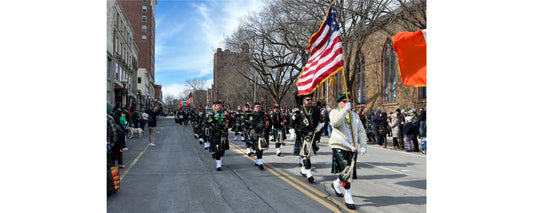The Connecticut State Seal has three planted grapevines on it, each one bearing a trio of purple bunches.
“Why grapevines?” you may ask, given all the native species that might seem better suited. The perfunctory reply: “Because that’s how it’s always been.” Before statehood in 1784, fruiting grapevines were on Connecticut’s colonial seal, officially adopted in 1662, and before that they’d been on the unofficial version, introduced in Old Saybrook in 1639.
But if meaning is what you’re after, things get a little stickier. The historical record doesn’t offer a clear answer as to what the grapes symbolize. The most plausible interpretation stems from the curious motto that’s accompanied those vines since the beginning, first as “Sustinet qui transtulit,” then as “Qui transtulit sustinet”: “He who transplanted [us] still sustains [us].” Those words conceive the colony’s largely English settlers as the exotic plantings of a gardener god—in this land, but not of it.
Like those grapevines.
By the mid-19th century, it’s safe to say that that more humble outlook, if it had ever been genuinely operative, was largely forgotten by many Americans, in deed if not in word. Most considered themselves of, not just in, the land they called home, and entitled to certain privileges over and above those deemed alien.
Like black people.
Black Americans at the time—whether enslaved in the South, living as second-class citizens in the North or enjoying substantially freer lives in progressive pockets of the country—were constantly reminded that they weren’t considered of this land. Wherever they lived, and whatever their official legal status, they would have known very well the demerits of being black in America—of having life, liberty and property never nearly as secured as those of their white neighbors. And whereas many whites could trace their transplanting to acts of volition often cast as valorous, blacks were transplanted here largely by force of other men.
At first, even the Civil War, now cast primarily as a struggle between abolitionists and slaveholders, wasn’t a legitimate cause to believe that the situation for black Americans would improve. The South fought to preserve the institution of slavery against what was only a perceived threat to it from Northern states, and the North, while abolitionism was by then a serious force in its political discourse, fought primarily to retain the union, regardless of whether or not slavery continued in the South. (Indeed, a handful of Union-aligned states, like Maryland and Delaware, still allowed slavery within their own borders.) But as Union soldiers advanced throughout Confederate territory, experiencing the peculiar horrors of Southern slavery firsthand, and as the bloody war made ever-clearer the need for drastic measures the public would’ve deemed too extreme not a few years earlier, the political reality changed.
In July 1862, Congress passed and President Abraham Lincoln signed the Second Confiscation Act, which gave him the authority to “employ… persons of African descent… for the suppression of this rebellion” and “to extend to persons who may have participated in the existing rebellion… pardon and amnesty.” In other words, he could now call blacks to serve in the Union army, and he could grant amnesty to anyone in any rebel state—slaves included. Lincoln’s subsequent Emancipation Proclamation, which was in fact an executive order, did both, going into effect on January 1, 1863.
For black men in Connecticut, this proved a clarion call, even though the state government, charged with approving and organizing a formal muster, was stalled due to opposition among its ranks. Finally, in the latter half of 1863, the official call was issued for black volunteers to enlist in the “29th (colored) Regiment,” as it was often identified in the papers. In November, the official camp of the 29th formed in the southwestern part of Fair Haven, encompassing a place improbably named Grape Vine Point.
The Hartford Daily Courant, which occasionally reported enlistment numbers at the camp, counted 145 men there as of December 3, 1863. By March 12, 1864, as the regiment was preparing to embark for war, the Courant reported that 1,006 had gathered from all over the state and beyond to join the 29th, with another 306 grouped into a second unit, dubbed the 30th Colored Regiment. According to an estimate by Civil War historian and reenactor Charles Benjamin Hawley, nearly 80% of eligible black men in Connecticut would enlist to fight for the Union.
They did so despite daily indignities. Being defined and assigned based on their skin color was one. Another was earning less than their white counterparts, while having to pay fees whites didn’t. Blacks often received less desirable assignments, too, in camp or on the battlefield. Suspicions that some commanders deliberately used black soldiers as cannon fodder carry a heavy ring of truth about them. Meanwhile, blacks could expect harsher treatment from Confederates if cornered or captured.
But members of the 29th also experienced moments of unmitigated glory—most of all when they were among the first wave of soldiers to enter Richmond, Virginia, the capital of the Confederacy, during its surrender in April 1865, heralding a victorious end to the Civil War.
As of 2008, some 140 years later, there’s a stunning memorial to the 29th Colored Regiment in present-day Criscuolo Park, on the grounds where the troops first mustered. In the center is a polished black monolith surrounded by a semicircle of eight shorter stones bearing the names and towns of the men who served. On the central pillar is a brief summary of the regiment’s formation, a list of some of its battles and a plaque featuring rifle-slinging soldiers on the march, caps pulled low over determined faces. Two of them wave flags—in back, the stars and stripes of America, in front, a stylized version of the Connecticut state flag, with grapes on the vine and three words in Latin: “Qui transtulit sustinet.”
They’d been transplanted and borne fruit despite the odds against them, and in the doing proved, to a much greater degree than most, that they were not just in this aspirational land we call America.
They were of it.
29th Colored Regiment Monument
Criscuolo Park, New Haven (map)
Further reading: www.conn29th.org
Written and photographed by Dan Mims. This updated story originally published on May 22, 2015.







